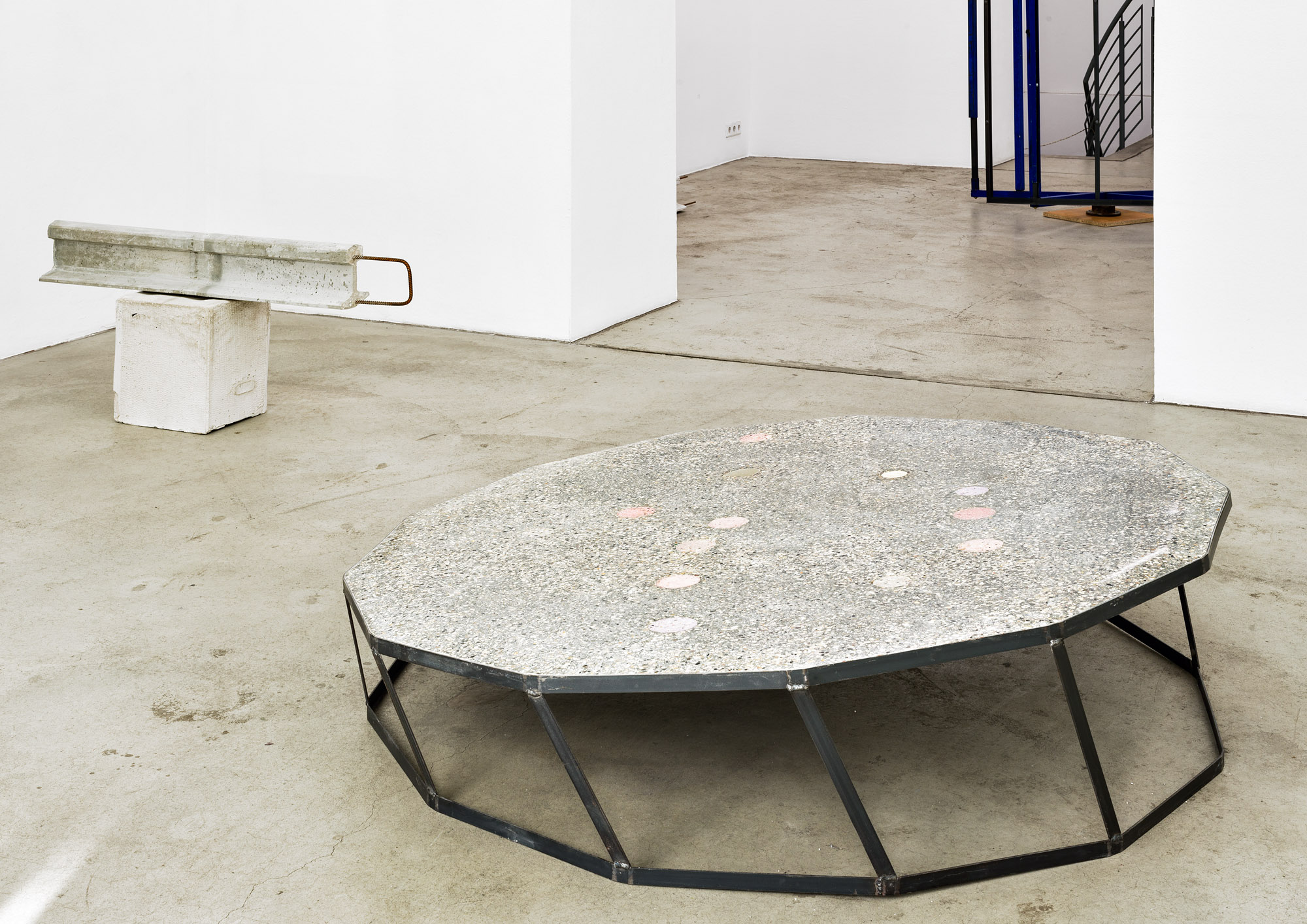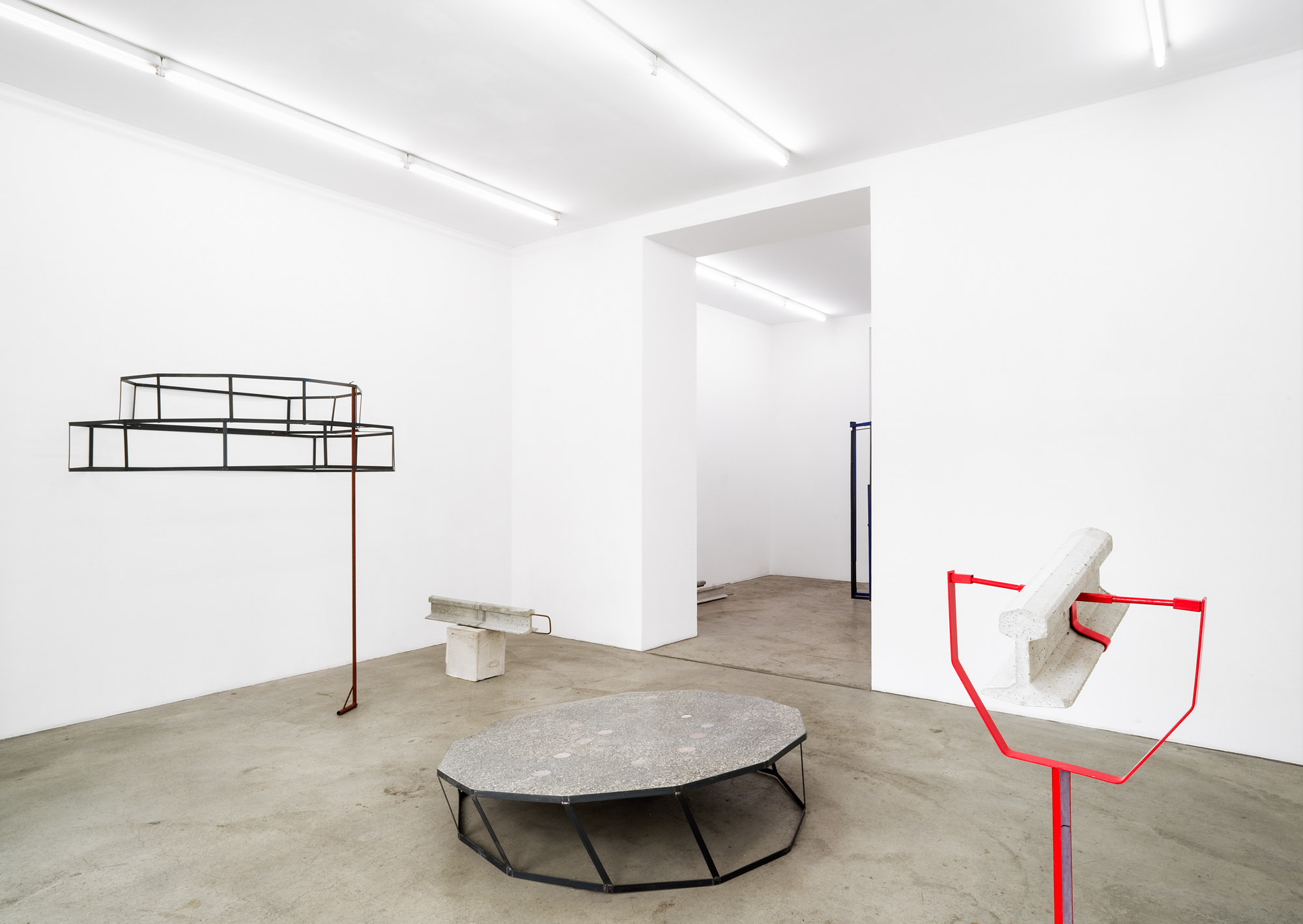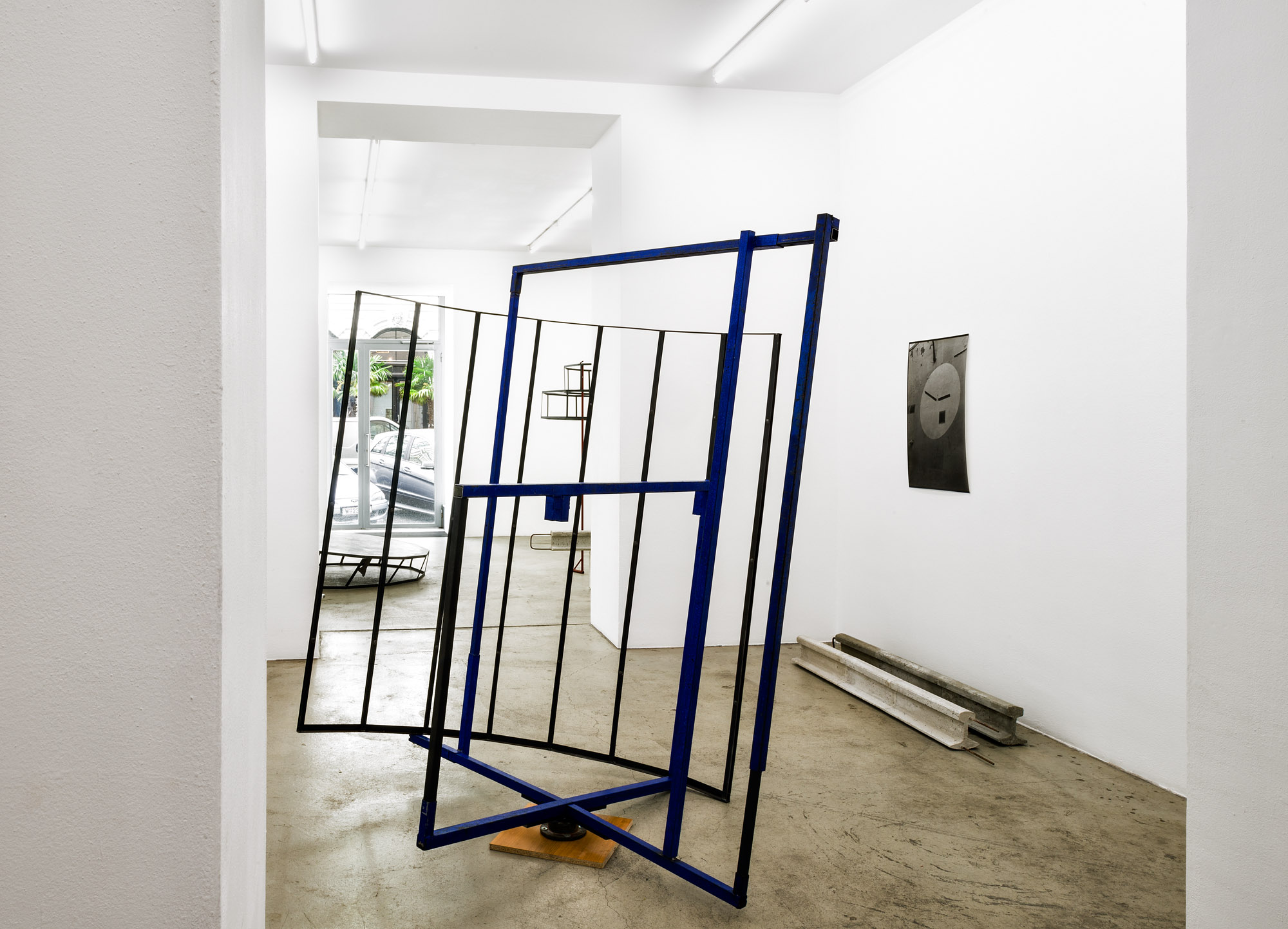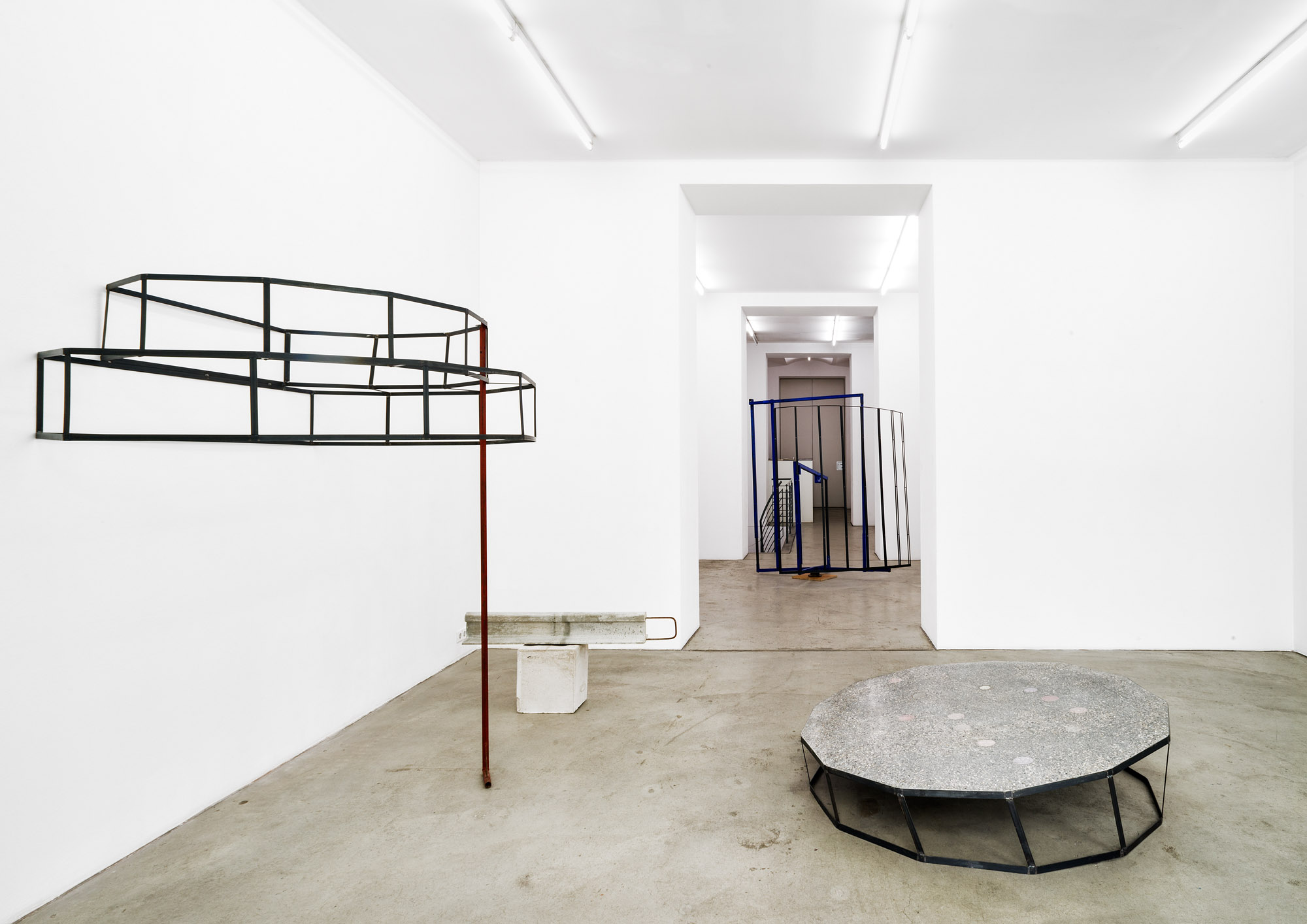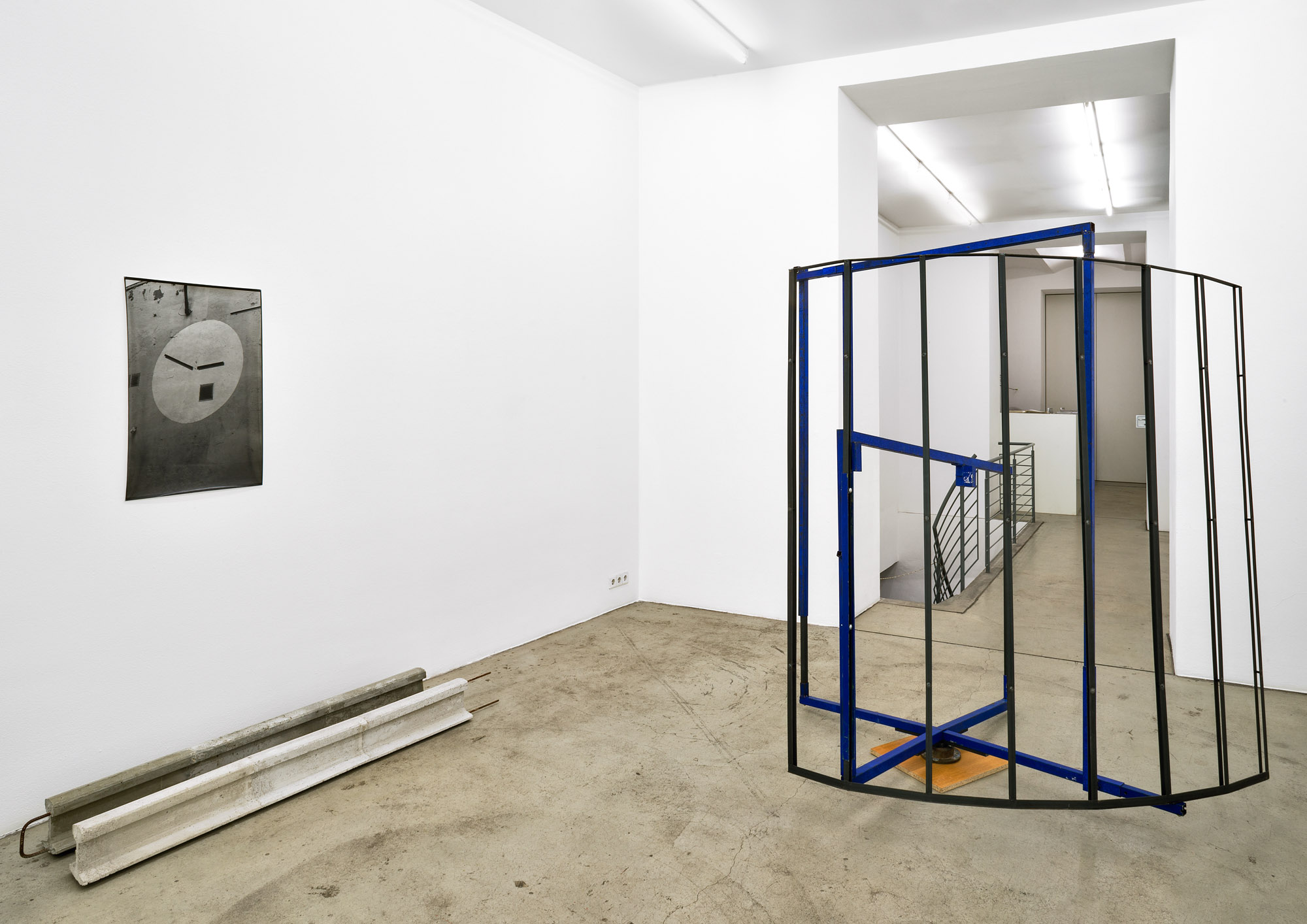
Der Titel von Cäcilia Browns Ausstellung fasst in kindlich-poetischer Manier ein Dilemma zusammen, dem viele Zeitgenossen mit idealistischem Handlungsanspruch heute ausgesetzt sind. Der Satz stammt von Cäcilias Neffen im Angesicht einer Passkontrolle an der schweizer Grenze und verweist durch das „nicht einmal“ auf etwas, das über die bloße Empörung hinaus geht, es steckt eine Sehnsucht darin. Der Räuber, hier gelesen als offener Widerständler gegen das Eigentum, scheint als heroische Figur des anderen Umgangs mit den gängigen Normen in unerreichbarer Ferne. Und auch die scheinbar mildere Form, die des Diebes, der sich zwar auch respektlos des Eigentums anderer bedient, dieses jedoch eher im Heimlichen enteignet, kann für „uns“ nicht in Anspruch genommen werden. Wer sind „wir“ aber hier? Es ist ja nicht nur der auch im Auto sitzende Vater, der seinem Sohn die Unterordnung vor staatlichen Autoritäten, wie dem Grenzbeamten demonstriert. „Wir“, das sind wir alle, die wir für Dinge bezahlen und uns somit im Geiste unseres Szenarios eben keine heroische Widerstandsplakette anheften können. Bei uns hat es ja „nicht einmal“ zum Dieb gereicht. Fasst man es weiter, so geht es um die Ratlosigkeit mit der man als Nicht-Räuber zurückbleibt. Denn der Räuber hat sich durch den Akt des Enteignens eine Identität als Desperado erschaffen. Der bezahlende Konsument hingegen bleibt mit einer erschlagend großen Auswahl an Gütern und Identitäten zurück und mit der Gewissheit, dass all dies die Bedeutungslücke letztlich nur sehr selten wird schließen können.
„If the discontent of modernity was the sacrifice of freedom in alienating jobs, the core discontent of our time […] is the feeling of having choice but being unable to exercise it. […] It is as if the door of the iron cage is open, yet a strange and paralysing force prevents us of getting out.“
(aus „Glass Cages and Glass Palaces“ von Yiannis Gabriel)
Es ist ein Raum des Verhindert-Seins, der hier erzählt wird und wer will kann darin auch eine Aussage über die begrenzten Möglichkeiten des Widerständischen in der Kunst sehen. Denn die Künstlerin nimmt sich ja hinein in die Gruppe derer, die eben „nicht einmal“ Diebe sind. Sie zeigt sich hier nicht nur solidarisch, sondern es ist zu vermuten, dass auch sie von ähnlichen Ambivalenzen betroffen ist, wie wir ordinäre Nicht-Räuber das sind. Und so lässt sich Cäcilia Browns Ausstellung auch als Standortbefragung lesen. Sie nähert sich ihrem instabilen Sujet mit auffällig stabilen Materialien wie Stahl und Kiesbeton, es ist ein schiefes Podest zu finden und auch der „Iron Cage“ (im deutschen Original bei Weber übrigens das „stahlharte Gehäuse“) des obigen Zitats lädt zu Assoziationen ein. Es ist auch eine Arbeit an der Frage, was die eigene bildhauerische Tätigkeit an (geistigen) Räumen erschließen kann, was die Wahl eines Materials über die eigene subjektive Empfindung hinaus bewirkt, wie Oberflächen zu uns sprechen. Es ist ein schwieriger Balanceakt aus konkreter Erzählung und assoziativer Offenheit, der es dem Betrachter erlaubt in einen aktiven Prozess mit der Arbeit einzutreten. Im Geiste dieser fordernden Offenheit dürfen wir von Cäcilia Brown auch keine Antwort darauf erwarten wer wir denn nun sind, wenn schon nicht Dieb oder Räuber. Eine Antwort des Neffen zu dieser schwierigen Frage ist leider nicht überliefert.
– Jan Groos
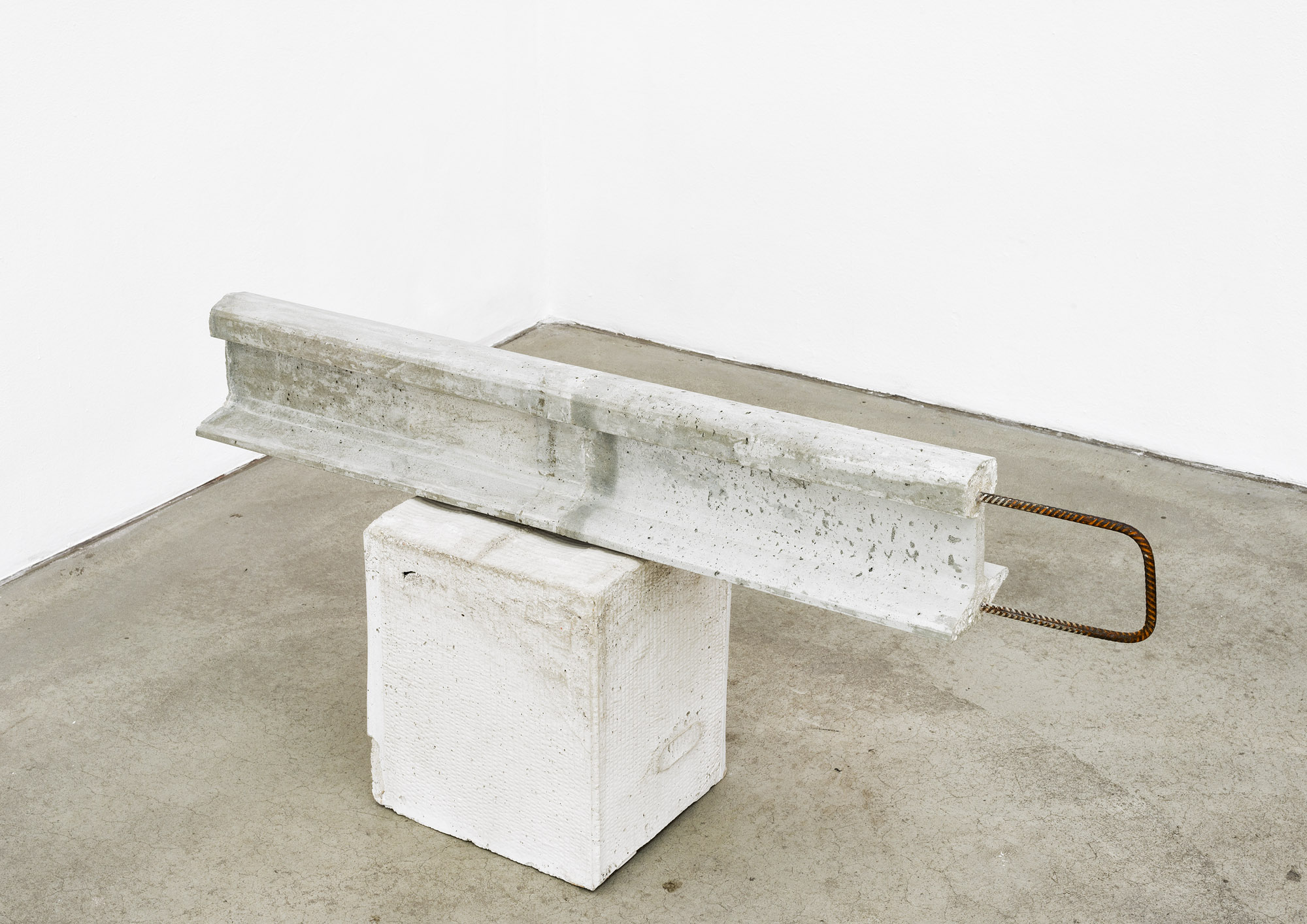
Cäcilia Brown
From the series Intercity. Willkommen im Parlament, 2013
concrete, reinforced concrete
125 x 32 x 55 cm
One concrete sculpture holding the door ajar. The air is fresh and so thick. Light lightning; sculptures disappearing in a blinding white reappearing in the same spot with the magic of Meliès. A thick metallic drizzle covering everything in an anonymous colour. Styrofoam seats, an old wooden chair without legs on top of the sofa, exquisite wood cuts with bright colours and unused tools. The radio playing The residents. Words repeated endlessly. The news celebrating the order over the leftist punks. Everything is absorbed – I found myself in. A circus platform made of heavy concrete like in a humble house or a public building. Bottles drawing circles on the gravel by the pavement. The intelligent grey. Pola X’s melancholic industrial scene at the factory: dogs barking and metal doors opening; A big ensemble of rock musicians building up a sound that scavenges in our stomach. Outside, the old components of heavy machinery of a metal plant in Dunaujváros; metal grids protecting houses in the 8th district in Budapest – lost last pieces of metal adjoined – one can look but no one will get in; The memory of the hard edge aesthetics of constructivism in a shower cabinet. It’s passive communication, something I would call to look without looking; to look without demanding a sense; to suspend the rational and allow the body to acquire the experience of the object without interference from the rational – that is devoid of all the pre conceptions that come from the rational. There’s something affirmative (to be read as an interior force, while the rational is a reactive one) about the choices made in this cabinet. The popular knowledge of making functional decisions – empty sculptures that don’t talk to us and act like lost objects thrown into the river sieving the objects that follow the water invisible till then.
The door is open in 45 degrees – it rotates on its axis, drawing a perfect quarter of a circle in my imagination. Wandering through the 3 sculptures in the space, one repeats the circular movement, this time more human, lived and imperfect; spiral like, activating short memories of already seen or given again to see objects. We walk around the sculptures as much as we walk around meaning – there’s something puzzling about the way all the sculptures are absolutely open but impossible to live. We make curve lines on the floor surrounding the objects no matter if the form is an imperfect curve or a polyhedral construction. We look up, front and down as if it was an exercise of how to look at things or, if with the same language, one could make variations to say three different things. We are in the middle place. Art grows in between and lives from its relation between things. The sculptures of Cäcilia Brown are porous fields made with a big input from the outside, the openness to the other, a new language – already there and a new body capable to incorporate what is happening in front of her.
At the gallery (as a projection).
I was first afraid of the passage from the erotic environment of the studio to the aseptic space of the gallery. In an art gallery the Dionysian openness to the new to the multiple, to the other, fades because of the Apollonian form – the aimed absolute visibility – with the support of white walls, fluorescent lights and grey uniform floors, that can be seen as pornographic (Gombrowicz) as opposition to the above mentioned erotic quality. The possible dialogue between the already used metal – the form- function-solution, that escapes the cliché in art, and the door and vitrines of the gallery space couldn’t mark better this dichotomy of values between one and the other. The metal structures of Cäcilia Brown’s sculptures hold no glass, although they are in potency meant to be covered with it. Glass would insert us into the sculpture. Through glass one can see and can be seen. One can see himself / herself reflected and its surrounding environment. With these sculptures the promised reflection is denied. In silence one can feel that the sculptures demand autonomy from us viewers – an ethos (artistic, social and political) capable of holding the different echoes from the world out there.
– Hugo Canoilas

